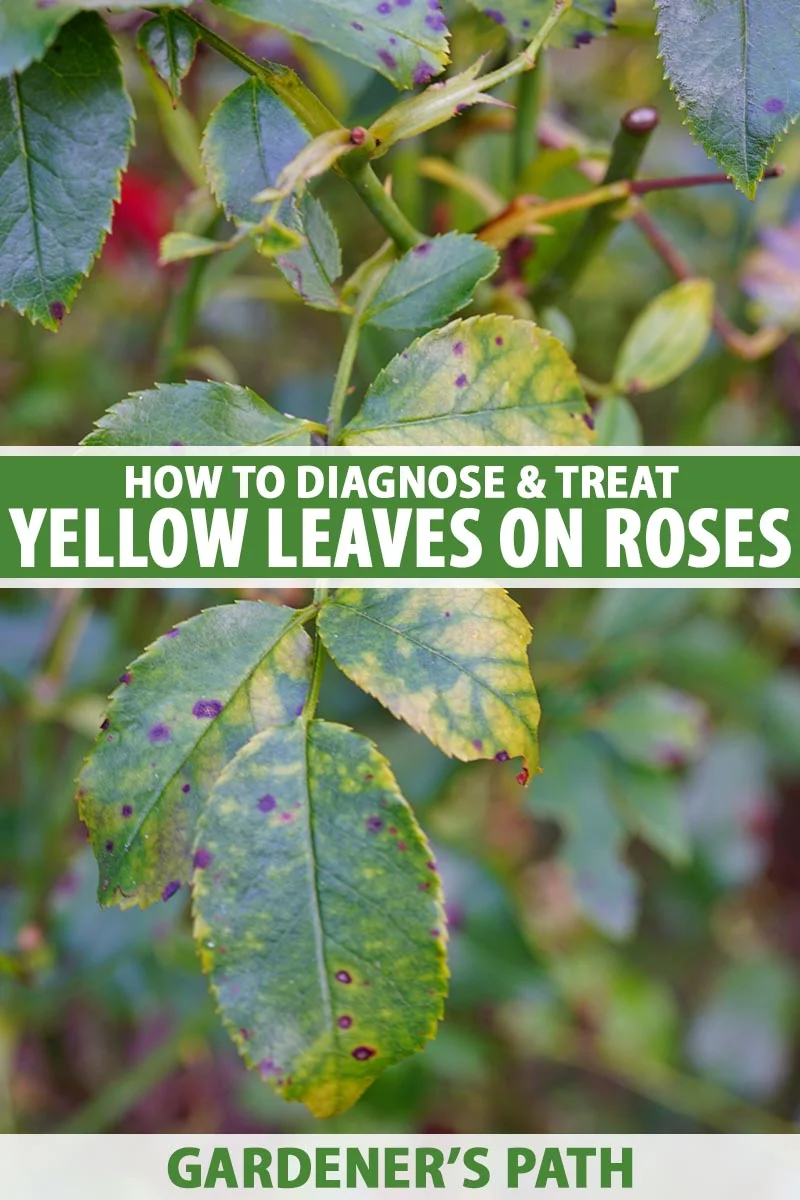Why are My Roses Turning Yellow

If you’re like most gardeners, you’ve probably had the experience of planting beautiful roses, only to see them turn yellow and wilt a short time later. While there are several possible reasons for this, one of the most common is simply that the roses are not getting enough water. When roses don’t get enough water, their leaves begin to turn yellow and then brown as they dry out.
The good news is that this problem is usually easy to fix – simply make sure that your roses are getting at least an inch of water per week, either from rainfall or from irrigation.
If your roses are turning yellow, it’s likely due to a lack of nutrients. Without the right amount of nitrogen, phosphorus, and potassium, plants can’t produce the chlorophyll they need to stay healthy. If you think your roses might be lacking in nutrients, try giving them a fertilizer designed for flowers.
You should also make sure they’re getting enough water – at least an inch per week. Roses that are too dry or too wet can also start to turn yellow.
Rose leaves turning yellow and falling off

Credit: www.gardenerreport.com
Why are My Roses Turning Yellow
There are a few reasons why your roses may be turning yellow. One possibility is that they are not getting enough water. Roses need at least an inch of water per week, so make sure you are watering them deeply and regularly.
Another possibility is that they are not getting enough nutrients. Roses need nitrogen, phosphorus, and potassium to stay healthy and vibrant. You can add compost or organic matter to the soil to help provide these nutrients.
Finally, if your roses are receiving too much sun, they may turn yellow. Make sure they have some afternoon shade to protect them from the hot sun.
It Could Be Due to a Nutrient Deficiency, Pests, Or Disease
Could be due to a nutrient deficiency, pests, or disease.
If You Suspect It’S Due to a Nutrient Deficiency, Try Fertilizing Your Roses With an All-Purpose Fertilizer
If you suspect your roses have a nutrient deficiency, the best course of action is to fertilize them with an all-purpose fertilizer. This will provide them with the nutrients they need to thrive. Be sure to follow the directions on the fertilizer package, as too much fertilizer can actually be harmful to plants.
If You Think It Might Be Due to Pests, Check Your Plants for Insects And Treat Accordingly
If you think your plants might be infested with pests, it’s important to check for insects and treat accordingly. There are a few tell-tale signs that can indicate whether or not your plants have been invaded by pests:
• Damage to leaves – If you notice chewed leaves or holes in leaves, this may be a sign that pests are present.
• Sticky substances on leaves – This could be honeydew, which is excreted by aphids and other sucking insects.
• Discolored or wilted leaves – This could indicate that the plant is not getting enough nutrients because the pests are feeding on it.
Once you’ve determined that there are indeed pests present, you’ll need to decide how to treat the problem.
There are many pesticides available on the market, but before using any of them, it’s always best to consult with a professional (like your local extension agent) to make sure you’re using the right product for the specific pest issue at hand.
Finally, If You Believe Your Roses are Suffering from a Disease, Contact Your Local Cooperative Extension Office for Diagnosis And Treatment Options
If you believe your roses are suffering from a disease, the best thing to do is contact your local Cooperative Extension office. They will be able to diagnose the problem and recommend treatment options.
Conclusion
If you notice your roses turning yellow, there are a few possible reasons why. It could be due to a lack of nutrients, too much sun exposure, or pests. To figure out the cause, take a look at the plant and see if there are any other symptoms.
If there is no change after adjusting the environment or adding fertilizer, then it’s likely that pests are to blame. To get rid of them, try using an insecticide or contacting a professional.
